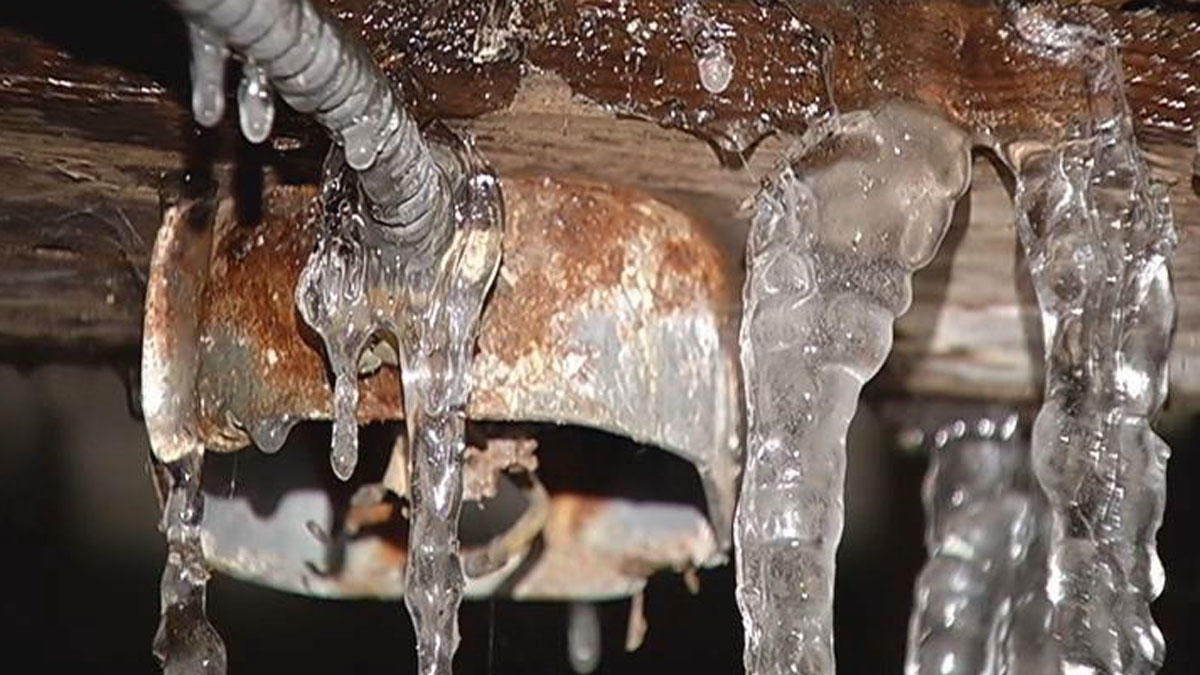Avoiding Frozen Pipes in Winter: Key Strategies
Avoiding Frozen Pipes in Winter: Key Strategies
Blog Article
They are making a few good pointers on the subject of 6 Ways to Prevent Frozen Pipes overall in this post followed below.

Winter can wreak havoc on your plumbing, especially by freezing pipelines. Below's how to prevent it from occurring and what to do if it does.
Intro
As temperature levels decline, the threat of frozen pipes boosts, potentially causing expensive repair services and water damage. Comprehending how to prevent icy pipelines is vital for home owners in cold climates.
Prevention Tips
Protecting vulnerable pipelines
Cover pipelines in insulation sleeves or utilize heat tape to safeguard them from freezing temperature levels. Concentrate on pipelines in unheated or external locations of the home.
Heating methods
Keep interior spaces sufficiently heated, specifically areas with pipes. Open cupboard doors to permit cozy air to flow around pipes under sinks.
How to determine icy pipelines
Seek lowered water circulation from taps, uncommon smells or sounds from pipelines, and visible frost on subjected pipes.
Long-Term Solutions
Structural changes
Take into consideration rerouting pipelines away from exterior walls or unheated locations. Include additional insulation to attics, cellars, and crawl spaces.
Upgrading insulation
Invest in top quality insulation for pipelines, attics, and wall surfaces. Appropriate insulation helps keep constant temperatures and decreases the threat of icy pipes.
Securing Outside Pipes
Yard hose pipes and outside faucets
Detach and drain yard hose pipes before winter. Set up frost-proof faucets or cover outside faucets with shielded caps.
Recognizing Frozen Pipes
What creates pipes to ice up?
Pipelines ice up when exposed to temperatures listed below 32 ° F (0 ° C) for expanded durations. As water inside the pipelines ices up, it increases, taxing the pipeline wall surfaces and potentially causing them to burst.
Threats and problems
Frozen pipes can lead to water supply disruptions, home damage, and pricey repair services. Burst pipelines can flood homes and create substantial architectural damage.
Indicators of Frozen Pipeline
Recognizing frozen pipelines early can avoid them from rupturing.
What to Do If Your Pipelines Freeze
Immediate actions to take
If you suspect frozen pipelines, keep faucets open to relieve pressure as the ice thaws. Use a hairdryer or towels soaked in hot water to thaw pipelines gradually.
Final thought
Avoiding frozen pipes requires positive actions and quick reactions. By understanding the reasons, indications, and safety nets, home owners can secure their plumbing during winter.
5 Ways to Prevent Frozen Pipes
Drain Outdoor Faucets and Disconnect Hoses
First, close the shut-off valve that controls the flow of water in the pipe to your outdoor faucet. Then, head outside to disconnect and drain your hose and open the outdoor faucet to allow the water to completely drain out of the line. Turn off the faucet when done. Finally, head back to the shut-off valve and drain the remaining water inside the pipe into a bucket or container. Additionally, if you have a home irrigation system, you should consider hiring an expert to clear the system of water each year.
Insulate Pipes
One of the best and most cost-effective methods for preventing frozen water pipes is to wrap your pipes with insulation. This is especially important for areas in your home that aren’t exposed to heat, such as an attic. We suggest using foam sleeves, which can typically be found at your local hardware store.
Keep Heat Running at 65
Your pipes are located inside your walls, and the temperature there is much colder than the rest of the house. To prevent your pipes from freezing, The Insurance Information Institute suggests that you keep your home heated to at least 65 degrees, even when traveling. You may want to invest in smart devices that can keep an eye on the temperature in your home while you’re away.
Leave Water Dripping
Moving water — even a small trickle — can prevent ice from forming inside your pipes. When freezing temps are imminent, start a drip of water from all faucets that serve exposed pipes. Leaving a few faucets running will also help relieve pressure inside the pipes and help prevent a rupture if the water inside freezes.
Open Cupboard Doors
Warm your kitchen and bathroom pipes by opening cupboards and vanities. You should also leave your interior doors ajar to help warm air circulate evenly throughout your home.

As a reader on How to Prevent Your Pipes From Freezing, I figured sharing that editorial was sensible. I beg you set aside a second to promote this page if you enjoyed it. Bless you for being here. Please visit our website back soon.
Source This Article Report this page